MARKET OVERVIEW
The Global Smart-Connected Pet Collars market represents a convergence of innovation in technology with pet care needs, offering pet owners the benefit of cutting-edge solutions for their pets. From a broad portfolio of products aiming to improve pet safety, well-being, and even engagement, smart-connected pet collars form one of the highly innovative areas where technology converges with pet care. The rise of IoT technologies has transformed smart-connected pet collars from niche gadgets to essential tools that reflect the changing attitudes of consumers toward pet care.
With the expansion of the Global Smart-Connected Pet Collars market, the focus will be on producing products that balance functionality with user-friendly interfaces. These are not just tracking devices; they feature health monitoring, real-time location tracking, and behavioral analytics. The focus of customizing products towards specific applications, such as activity levels for the fitness-conscious pet owner or geofencing for added security, will help to differentiate the market's course. Future innovation would emerge to include more sustainable uses of materials and energy-efficient technologies.
The technological improvement of the market will be advanced by artificial intelligence, machine learning, and sensor technologies. Smart collars will monitor slight behavioral changes and alert the owner to problems before they can become major concerns. This, in turn, will improve preventative care, diminishing reliance on reactive visits to the veterinary. In addition, mobile applications will increasingly be integrated to provide pet owners with an intuitive interface to access data, manage settings, and receive alerts, further simplifying the experience.
The Global Smart-Connected Pet Collars market will be diversified regionally in the future as manufacturers adapt their products to suit different cultural attitudes toward pet ownership. For example, markets that are more companion animal-oriented, such as North America and parts of Europe, may drive demand for high-end, feature-rich products. In contrast, regions with a burgeoning pet care industry may focus on affordability and basic functionalities. This adjustment will involve careful collaborations of the developers of the technology, veterinarians, and consumer analysts so that what will be offered appeals to them.
The third area will be data privacy and security. These devices are gathering sensitive information, so companies will have to bear increased scrutiny for developing encryption and data protection mechanisms. Ability to provide privacy without hindering functionality will define the credibility brands need to attain in the Global Smart-Connected Pet Collars market.
The innovation will also involve aesthetic and ergonomic considerations in order to be aligned with consumers' ever-increasing demands for products that fit their pet's comfort and uniqueness. More specific customization would be about possible variations through adjustable sizes and colors as consumers seek devices that mimic their pets' personality. Furthermore, smart connected pet collars will integrate even better with general smart home ecologies and develop new opportunities that, for instance, can easily allow for seamless interoperability with the connected feeder or surveillance camera.
The Global Smart-Connected Pet Collars market defines a new experience in pet care, with the power of technology in intelligent solutions that are in sync with the trends of today's lifestyles. The industry will set precedents regarding how technology can be included in making the bond between humans and their pets richer and give a benchmark for innovation and adaptability.
Global Smart-Connected Pet Collars market is estimated to reach $1,027,079.20 Million by 2032; growing at a CAGR of 10.8% from 2025 to 2032.
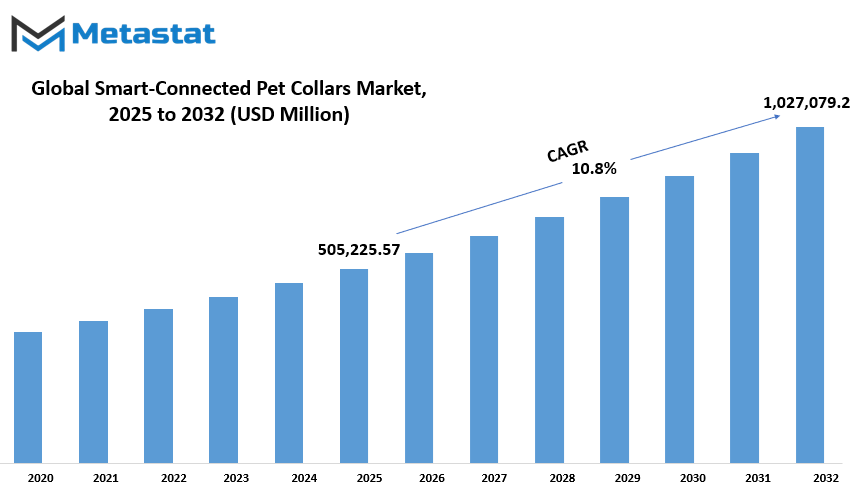
GROWTH FACTORS
The global smart-connected pet collars market has been surging globally on the back of escalating trends in owning pets and a propensity to spend that pet owners develop when it comes to pet-care products. Featuring advanced features that allow location tracking, health monitoring, and even behavior analysis, such collars are becoming important devices for making sure the pets are as safe as can be and more secure and healthy altogether. Many pet owners nowadays consider them indispensable for fostering better understanding of the needs of their pets and their security in crowded urban areas.
Some of the reasons behind the boom of this market include the need for solutions prioritizing pet safety and health monitoring. These collars offer peace of mind to owners because they can monitor their pets in real time, hence reducing the risk of losing them or missing early signs of health issues. However, there are challenges with the widespread adoption of smart pet collars. The high costs of these advanced technological devices put a barrier in the price-sensitive markets and only allow a limited or smaller group of pet owners to access them. In addition, the issues of data privacy and security have also cast doubts over the reliability and safety of these devices. Users fear misuse of collected data, as well as the possibility of hacking or malfunctioning of these devices.
However, in the face of all these challenges, technology offers much excitement for the future. The combination of AI with IoT provides real-time health diagnostics and detailed behavior analysis inside these collars. With these innovations, pet owners will be able to track not only their pets' health but also understand their emotional well-being better, enhancing the bond of the pets with their families. These technological developments could significantly boost the market by making smart-connected collars even more appealing and functional.
In conclusion, while the high costs and privacy concerns associated with smart-connected pet collars pose challenges, the growing emphasis on pet safety and health, coupled with technological advancements, ensures that the market will continue to expand. The future of such devices is tremendous since they are being transformed to suit the requirements of pet owners who are thirsty for better ways of caring for their pets. This market has the ability to further grow with technology as it continually improves its utility and appeal.
MARKET SEGMENTATION
By Pet Type
Currently, Global Smart-Connected Pet Collars are in big demand because technology is continuously adopting innovative devices, which make animal care much advanced. This advancement in the life of animals made the owners increase their spending as they value a pet's comfort and safety and, in their turn, bring these modern types of pet equipment to marketplaces. Some functions of the type include GPS monitoring, health data access, and other behavioral analysis systems.
The market segmentation by pet type is an important point that identifies two major types: cats and dogs. Of these, the smart collars for cats market is expected to touch a value of $134,688.16 million. It speaks much about the increased demand for specialized solutions catering to the specific needs of pet owners of felines. Cat collars have GPS tracking enabled, so an owner can easily track the activity of his pets. This keeps the owner comforted, more so for pet owners who will allow their cat to roam the outdoors. Additionally, health-related features can point out slight deviations in behavior and activity, such that health disorders can be treated early.
For dogs, the prospects look equally bright: smart-connected collars. More and more dog owners are using these devices to help them manage pet safety, training, and health. Features such as activity tracking and geofencing are very convenient and secure. For example, a geofencing function lets the owner know if the dog wanders outside a set area without their knowledge, thus reducing the probability of losing the pet. In addition, the collars may have training aids like vibration or sound cues that help to reenforce good behavior.
The growing awareness of pet health and the emotional connection between pets and their owners are key factors fueling this market. Owners are no longer viewing these devices as luxuries but as investments in their pets' well-being. The appeal of smart-connected collars extends beyond individual pet owners, as veterinary professionals and animal behaviorists also acknowledge their benefits in monitoring and maintaining pet health.
The future for the Global Smart-Connected Pet Collars market looks promising, as more technology improvements are sure to advance these products' capabilities. Better battery life, waterproof design, and integration with mobile applications have all increased the attractiveness of the product. This focus on innovation and the well-being of pets is bound to continue expanding the market and ensure that the pet care industry values this particular area of focus.
By Component
The Global Smart-Connected Pet Collars market is gradually increasing in growth, stimulated by the advancing technology and heightened awareness of animal care. This type of product is designed for enhancing the lives of pets as well as benefiting pet owners by being convenient for them. Using technology with actual usage, such devices enable effective monitoring and managing of the pet's activities, location, and health. Understanding the various displays and their respective roles in achieving a working and valuable product can be achieved through market segmentation by component. The major components of these collars are the displays, GPS chips, Bluetooth chips, and sensors.
These each play a crucial role to ensure efficiency and usability of a smart-connected pet collar. An easy way to allow the owner access to see all the crucial information about a pet, whether it is in terms of their current activity or health data. A GPS chip will be able to track your pet's whereabouts so that one can easily track the location and return them without waste of time whenever they wander or get lost. This is one of the most sought-after functionalities in smart collars due to the reassurance it gives. The Bluetooth chips enable the collar to connect easily with devices like smartphones or tablets.
This makes real-time updates and alerts possible, making it easier for pet owners to monitor their pets remotely. Moreover, the Bluetooth connectivity also supports some additional features such as the ability to change collar settings using a mobile application. Sensors are another important part that collect information related to the activity, heart rate, temperature, and other health indicators of a pet. The collected data is then analyzed and insights are given that help the owner make proper decisions about their pet's care. Together, these elements make a product that is not only functional but also highly reliable.
The marriage of these technologies makes sure pet owners can remain closely connected with their pets even when they are away. In line with increasing demand, the producers are enhancing these elements for improved functionality, longer battery life, and greater durability. These innovations are set to meet rising expectations from pet owners who need products that are easy to use and beneficial to their pets.
The Global Smart-Connected Pet Collars market is therefore gradually developing because of the spreading acceptance of smart connected pet collars by pets' owners. The industry now sets a new standard in pet care, offering products that make pet management simpler and more effective by placing a higher priority on the needs of pets and owners alike.
By Application
With most pet owners embracing the use of technology to care for their animals, the Global Smart-Connected Pet Collars market has grown appreciably. The collars are advanced devices designed to deliver a variety of functionalities that guarantee safety, healthy living, and general well-being of pets. Integrating technology with daily care for pets in this manner has facilitated easier monitoring of a pet's activity and whereabouts for its owner. The various applications by which the market is divided show the wide range of needs they serve, including GPS location monitoring, activity and health monitoring, multi-purpose monitoring, and all the other uses.
GPS location monitoring is one of the most standout features, as it enables the owners to monitor their pets in real time. This is truly essential for owners who have wandering pets or who live in environments where losing a pet can be very hazardous. The facility to locate a pet specifically would provide more comfort and decrease the anxiety of losing a loved animal.
Other features like activity and health monitoring functions would help understand their daily movements, exercise levels, and even specific health-related markers. For example, they can track a pet's steps or may even alert owners for unusual patterns that might indicate a health issue. Such features are invaluable for maintaining a pet’s fitness and detecting issues early.
The multi-purpose monitoring capabilities combine several features into one device, offering users a comprehensive tool for managing their pet's needs. These may include alerts for specific behaviors, environmental conditions, or even reminders for feeding and medication schedules. The ability to integrate multiple functions into a single collar simplifies the care process, making it easier for pet owners to stay organized and attentive.
Other applications in the market are for niche or specialized needs, thereby broadening the functionality of these collars. It may include features such as temperature monitoring for pets in extreme climates or communication tools for specific training purposes. This versatility reflects the industry's commitment to innovation and its efforts to meet the varied demands of pet owners worldwide.
Therefore, the value of smart-connected pet collars can be seen in their rise in demand in relation to modern pet care. It combines convenience with advanced monitoring capability for owners to achieve more reliable, risk-free environments for animals. And at this rate, it's very noticeable that these technological advancements tend to help deepen the bond between pets and owners.
By Sales Channel
The market for smart-connected pet collars is also increasing worldwide due to the increased safety, health, and welfare consciousness of the pets among owners. Such new products combine technological capabilities with everyday functionality, making them extremely appealing to contemporary pet owners in terms of features such as GPS tracking, activity monitoring, and behavior training.
As pets become indispensable parts of most families, more advanced tools care for them alongside giving their owners peace of mind. Increasing pet adoption with respect to such devices is indicative of their increasing influence in the caring of pets. The online and offline forms are the basic categorizations done based on channels of sales involved in the overall market of a smart-connected pet collar.
The offline sales channels range from traditional brick-and-mortar pet stores and veterinary clinics to specialty retailers. This does provide a significant advantage to customers who can touch and feel the product before making a purchase. It also allows them to get immediate assistance and advice, which is something many buyers prefer- getting to interact personally and receiving direct support. On the other hand, online channels have received an immense push by the ease of access. There are also various dedicated e-commerce websites and marketplaces through which customers can surf through several brands, compare prices, and read reviews given by other pet owners before reaching a conclusion.
The fact that one can buy from home with a much greater variety appeals to many buyers as it suits many in this fast-paced world of today. In addition, promotions and offers sometimes make the buyers buy the collars from online stores. With growing awareness of the benefits of smart-connected pet collars, manufacturers and sellers are finding innovative ways to reach a diverse audience. Offline and online channels each play a crucial role in this dynamic market. Combining the tactile, in-person experience of offline shopping with the vast resources and ease of online platforms, businesses can effectively meet the varied needs of pet owners.
In the end, the decision between an offline and an online purchase depends on the preferences and priorities of the individual. Offline channels are more immediate and provide personal guidance, while online platforms offer flexibility and a wider selection. These sales channels, together, propel the global smart-connected pet collars market to provide pet owners with the tools needed to improve their pets' lives.
|
Forecast Period |
2025-2032 |
|
Market Size in 2025 |
$505,225.57 million |
|
Market Size by 2032 |
$1,027,079.20 Million |
|
Growth Rate from 2024 to 2031 |
10.8% |
|
Base Year |
2024 |
|
Regions Covered |
North America, Europe, Asia-Pacific, South America, Middle East & Africa |
REGIONAL ANALYSIS
The global smart-connected pet collar market is segmented geographically to present a clear vision of its reach and scope of growth. In this market, North America dominates and is segmented into three regions, namely the United States, Canada, and Mexico. This allows for a further segmentation of each country's trend and demand toward the overall growth of the market in this region.
Another large region in this market is Europe, consisting of the United Kingdom, Germany, France, and Italy. All other countries in Europe fall under the Rest of Europe category. This segment highlights the differences in consumer requirements and technological factors affecting the smart-connected pet collar adoption in the region.
In Asia-Pacific, the market can be further divided among India, China, Japan, and South Korea. These countries are known to showcase rapidly rising technology sectors, driving the adoption of innovative pet care solutions. In the rest of Asia-Pacific, a separate market segment is captured that represents the other countries in the region that are contributing to the growth of the market through increased pet ownership and technological awareness.
South America is also a promising market for the smart-connected pet collars market. The countries under this segment include Brazil and Argentina, while the rest of the countries are considered under the Rest of South America. The increasing awareness of pet welfare and technological progress in pet care is driving the market in this region.
The final region that will be discussed is the Middle East & Africa. It has been segmented into the GCC countries, Egypt, South Africa, and the Rest of the Middle East & Africa. This segmentation is a better representation of market dynamics in these regions and is likely to focus on issues like urbanization, increasing disposable incomes, and higher pet ownership rates, thereby impacting the adoption of smart-connected pet collars.
This geographical segmentation of the global smart-connected pet collars market is useful in determining regional trends while assisting businesses to adjust their strategy to cater to specific regional requirements and thereby gain maximum growth opportunities and market share.
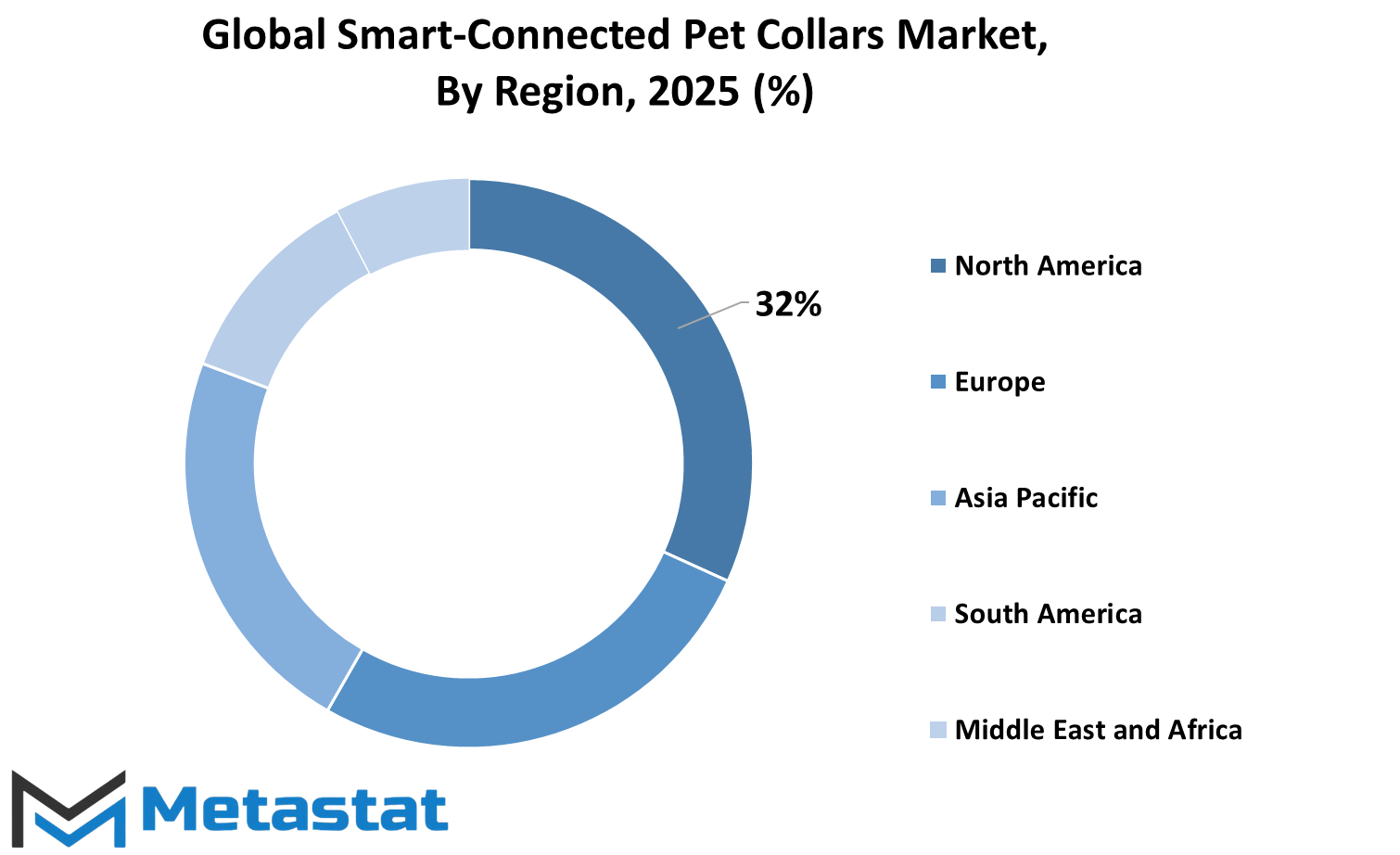
COMPETITIVE PLAYERS
The Global Smart-Connected Pet Collars market is receiving much attention due to the growing number of pet owners seeking technological solutions for improving the health and safety of their pets. Advanced features, such as GPS tracking, activity monitoring, and health insights, have made these collars indispensable for modern pet care. The market consists of established companies along with innovative start-ups competing in the development of products to meet pet owners' wide-ranging needs. The following are the known brands that exist in the Smart-Connected Pet Collars market: Garmin Ltd., Mars, Incorporated (Whistle), and PetPace LLC.
Such companies have earned recognition for the reliability and efficiency of their products. Other notable names involve Barking Labs Corp., RAWR Inc., and SCOLLAR Inc., coming with innovative solutions suited to any specific kind of pet care. Halo, PETFON, DOGTRA, SpotOn, FitBark Inc., and Gibi Technologies Inc. make their contributions to a competitive landscape, offering diverse features with differences in preferences and budgets. One main reason why more and more are ordering these collars is that they are highly practical, while awareness of how essential it is to keep watch over their health and activities increases among pet owners.
Functions, such as GPS tracking, allow finding a lost pet within the shortest time possible to avoid the accompanying anxiety. Functions aimed at monitoring pets' health track their fitness and allow the earliest detection of problems in case some of them do occur. With the technological advancements, the manufacturers are upgrading their products in terms of the features that are more accurate, user-friendly, and durable. For example, some of the devices nowadays come with longer battery life, water resistance, and real-time alerts, hence suitable for many environments and lifestyles. These advancements enhance the experience of the users and drive adoption of smart-connected collars by pet owners.
Even the market growth reveals a pattern of technology integration in everyday life. The recent dependence of consumers on smart devices has led to taking this change into the realm of pet care as well. Smart-connected collars have emerged as a necessity to keep pets safe and secure as they bridge the gap between the need for technology and that for pet owners. Innovations and competition from the industry players shall continue evolving this market's tomorrow.
Smart-Connected Pet Collars Market Key Segments:
By Pet Type
- Cat
- Dog
By Component
- Displays
- GPS Chips
- Bluetooth Chips
- Sensors
By Application
- GPS Location Monitoring
- Activity and Health Monitoring
- Multi-purpose Monitoring
- Others
By Sales Channel
- Offline
- Online
Key Global Smart-Connected Pet Collars Industry Players
- Garmin Ltd.
- Mars, Incorporated (Whistle)
- PetPace LLC
- Barking Labs Corp.
- RAWR Inc.
- SCOLLAR Inc.
- Halo
- PETFON
- DOGTRA
- SpotOn
- FitBark Inc.
- Gibi Technologies Inc.
WHAT REPORT PROVIDES
- Full in-depth analysis of the parent Industry
- Important changes in market and its dynamics
- Segmentation details of the market
- Former, on-going, and projected market analysis in terms of volume and value
- Assessment of niche industry developments
- Market share analysis
- Key strategies of major players
- Emerging segments and regional growth potential



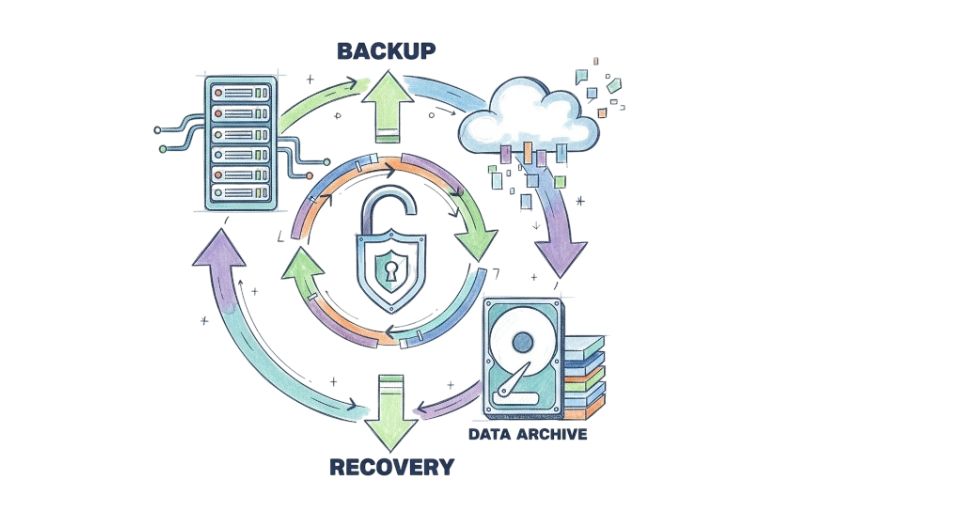
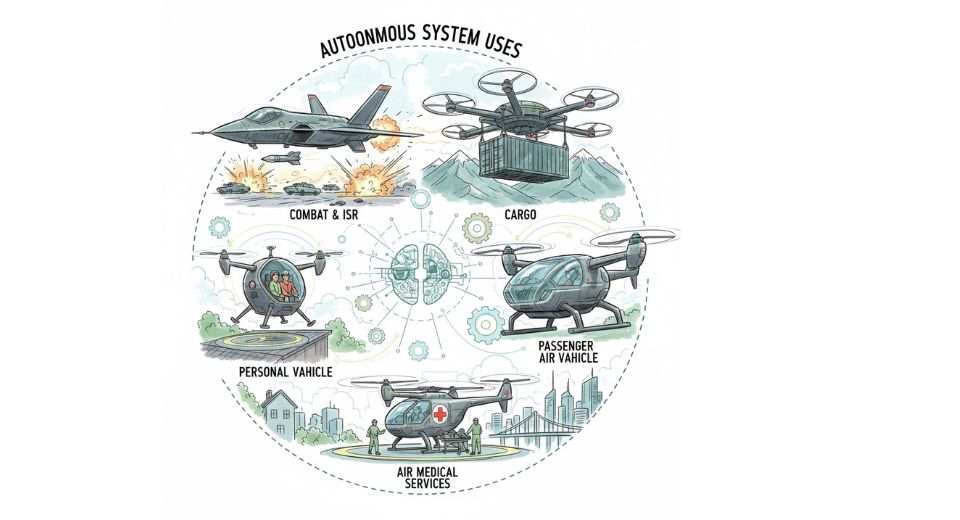
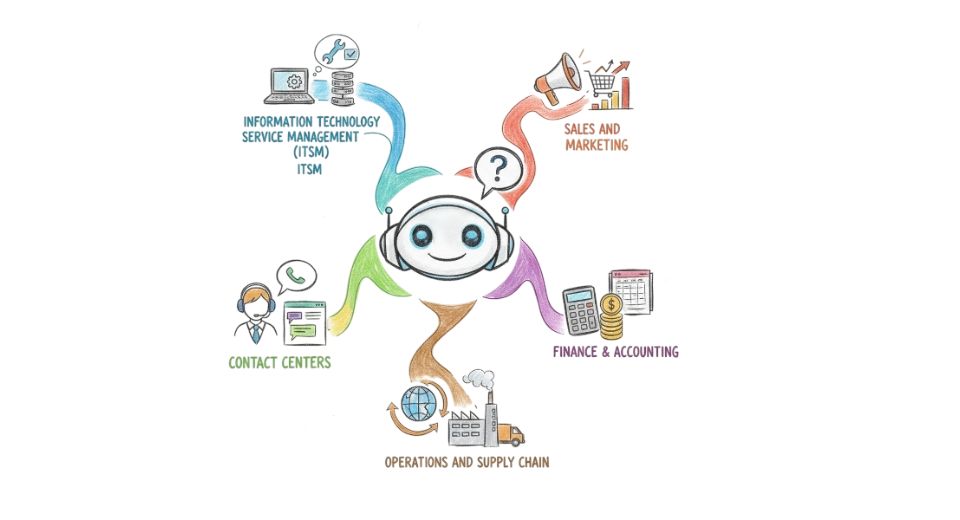
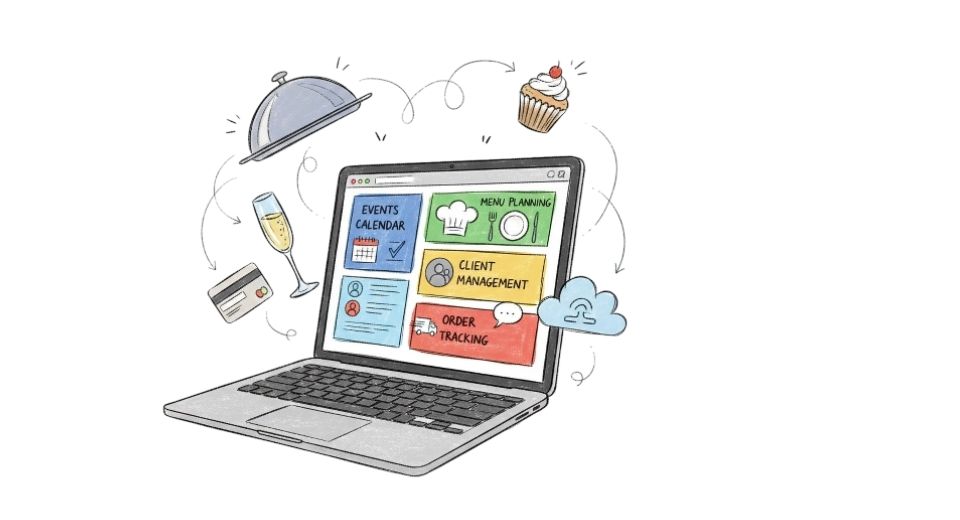

 US: +1 3023308252
US: +1 3023308252






